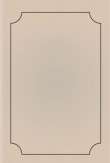You are here
قراءة كتاب ABC's of Science
تنويه: تعرض هنا نبذة من اول ١٠ صفحات فقط من الكتاب الالكتروني، لقراءة الكتاب كاملا اضغط على الزر “اشتر الآن"
([email protected]). Items in [brackets] are editorial comments added in proofing. Descriptions of figures have also been added in [brackets], although the figures themselves have not been included.
A B C's of Science
By
CHAS. OLIVER
INDEX
I. The Supreme Power of Nature
II. Astronomy
III. The Solar System
IV. Across the Divide
V. Flourishment of the Earth
VI. Animal Magnetism
VII. Miscellaneous
The author of this little book spent several years in composing his work, to the best of his ability, making the treatise brief and to the point, so that the reader may not become weary and misunderstand the true meaning.
His desire is to have the flourishing human know the truth of Science and to learn what he can of its greatest wonders.
CHAS. OLIVER.
ABC's OF SCIENCE
CHAPTER I THE SUPREME POWER OF NATURE
1. Supreme power of Nature is comprised of all.
2. It may be divided into three parts: Mineral, Vegetable, and Animal.
3. Mineral is comprised of Mineral Matter and Mineral Magnetism.
4. Animal is comprised of Animal Matter and Animal Magnetism.
5. Vegetable is comprised of Vegetable Matter and Vegetable Magnetism.
6. Each of the foregoing have life, and by cooperating with each other produce life that flourishes.
7. There being as many different kinds of Magnetism as there are matter which is beyond the strength of human to classify.
8. The supreme power of Nature had no beginning so it has no end; its life is indestructible.
[Figures: Five line-drawings, captioned as follows. "Comet of 1881, the year Mother Shipton prophecied the Earth to come to an end." "Comet of 1744." "Comet of 1857." "Biela's comet discovered in 1827. returned at intervals of 6 1/2 years. In 1846 it returned split, returned in 1852, but never appeared since." "Saturn."]
CHAPTER II ASTRONOMY
(The word "vapor" used in general for water, ice, atmosphere, etc.)
1. Space without beginning or end, filled with unmaterial and material life. The material is in motion by the currents of unmaterial life.
2. The material is in perfect bodies, imperfect bodies, and unconcentrated material.
3. Perfect bodies group into constellation, called sun's planets, planetoids, and moons.
4. Imperfect bodies are comets, called periodic and parabolic comets.
5. Unconcentrated material called Milky Ways, and rings such as are around Saturn.
6. The unmaterial life currents run in every conceivable manner. I will call the currents carrying constellation sun currents, planet currents, planetoid currents, moon currents, and comet currents, respectively.
Milky ways eddys.
7. Saturn is the only body we know which has an unconcentrated obsequious attendant. Such rings may appear around constellations, planets, moons, etc.
These rings can be accounted for in two ways,—first, the material never being concentrated; second, by two or more bodies coming together and throwing the bodies into atoms.
8. Suck, or Nebula, currents form in the Milky ways (the same as two or more currents of air coming together and making a whirlwind), which concentrates the material into bodies, thus forming constellations and comets; also rings such as are around Saturn.
If a constellation is formed its current is called sun current, and here



